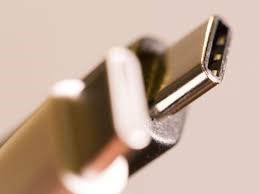USB-C

Disclaimer: No Copyright infringement intended.
Context
- The European Commission has proposed a plan to harmonise charging ports and fast charging technology for electronic devices — something that could force original equipment manufacturers (OEMs) to adopt a single technology for most of their devices.
What exactly is the proposal?
- The European Commission has proposed USB-C to be the common charging port to allow consumers to charge their devices with the same USB-C charger, regardless of the device brand.
- Original equipment manufacturers (OEMs) will have to provide the common standardised port for devices such as smartphones, tablets, cameras, headphones, portable speakers and handheld video-game consoles.
- The proposal, however, only covers wired chargers and excludes wireless charging from its ambit, meaning that only if a device uses a cable to be charged will it need to have a USB-C port.
- In case the device is only to be charged wirelessly, there is no compulsion to have a USB-C port in the device.

About USB Cables
USB-A
- USB-A is most commonly used with computers or power outlets. When charging, you will connect the USB-A side into the USB-plug or into a laptop or computer.
- USB-A cables will only go into the port one way. You can usually tell which way up they should be by the USB symbol printed on the top. Make sure that the cable is inserted the correct way so as not to damage the cable or device.
USB-B
- USB-B ports are mostly used to connect printers or external hard drives with computers. They are not as common as the other types of USB cables.
USB-C
- USB-C is the most recent USB development. USB-C cables allow high speed data transfers and a higher power flow, allowing your phone to charge more quickly. USB-C cables are also reversible and can be plugged in either way round.
- USB-C is a 24-pin USB connector system with a rotationally symmetrical connector. The USB-C port has the ability to handle higher power.
- USB-C, is designed to handle up to 100 W of power output, making it more ubiquitous for the entire device ecosystem, including heavier products such as laptops.



1.png)
